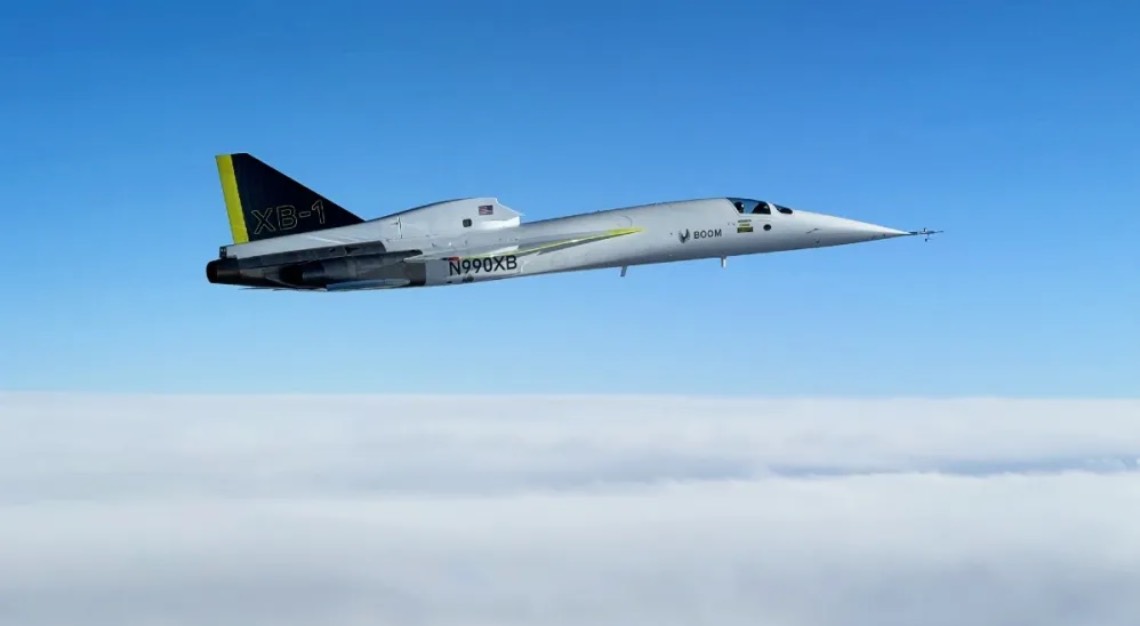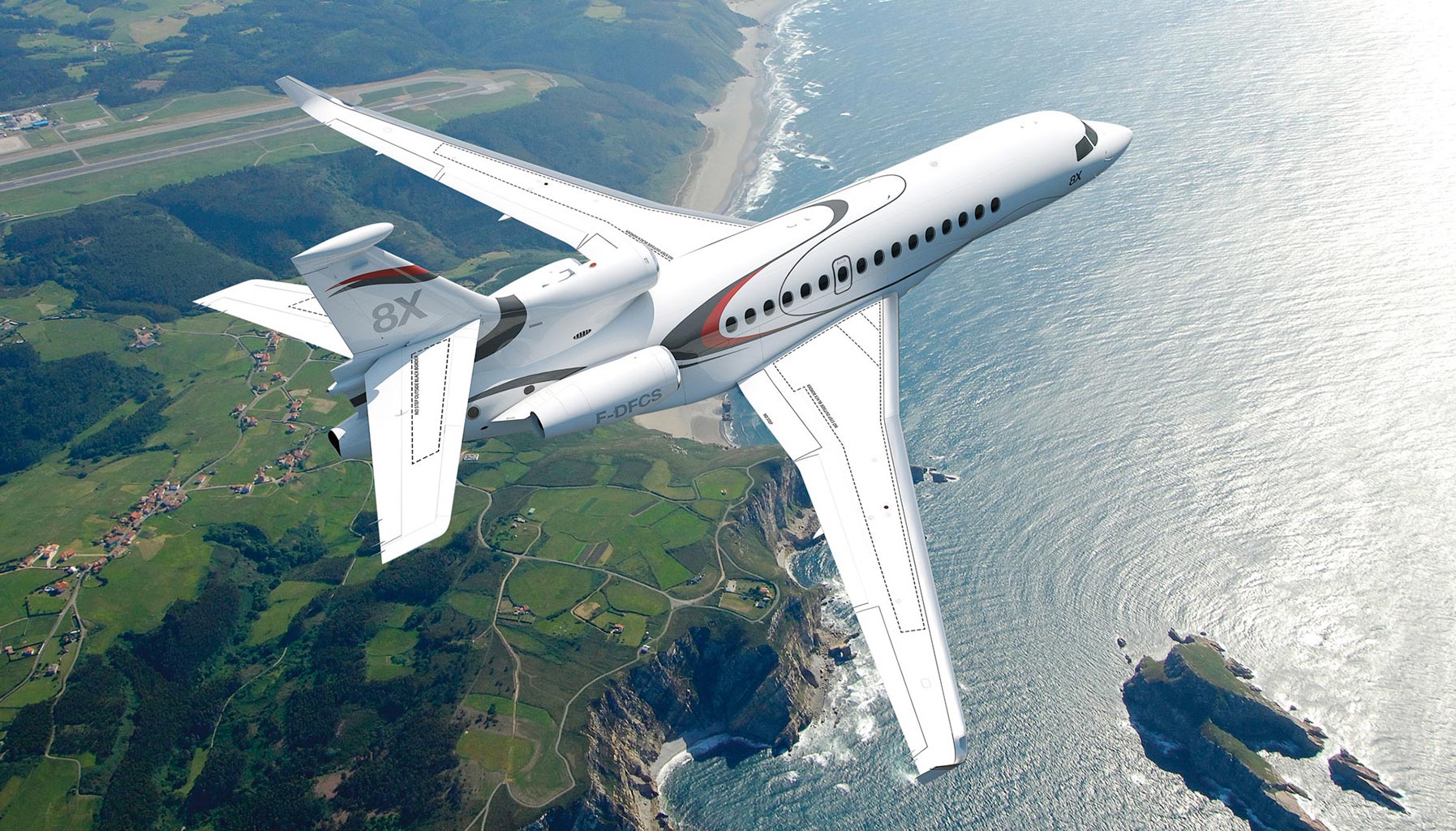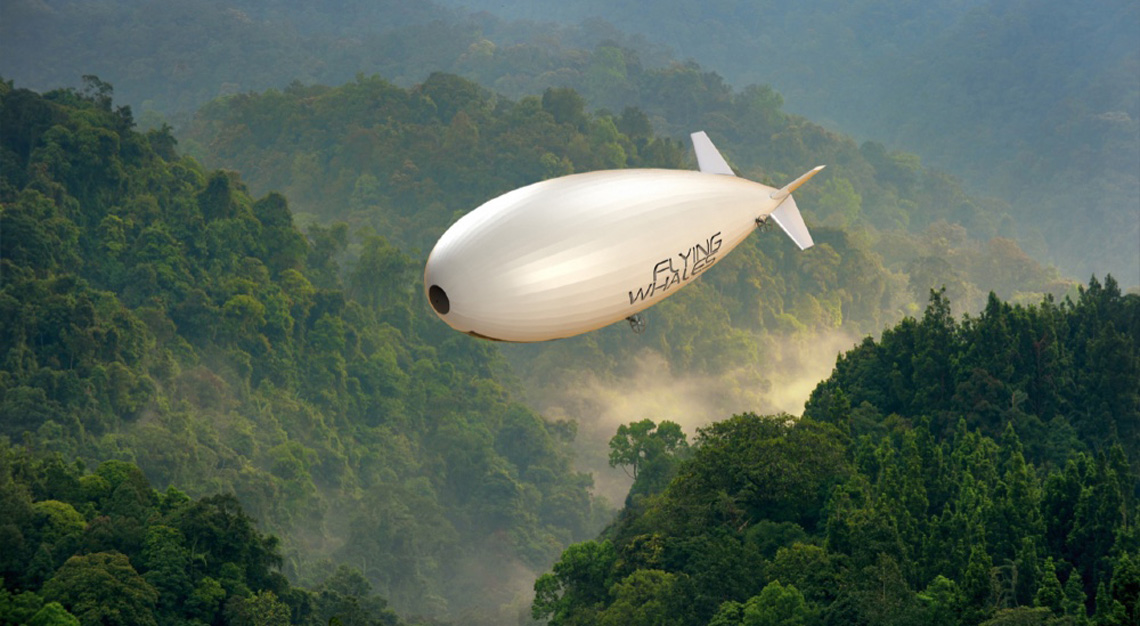Boom’s XB-1 reached Mach 1.112, after 10 years of planning and a year of flight tests. Up next: its Overture supersonic business jet
Boom Supersonic hit a milestone yesterday when its XB-1 experimental jet passed Mach 1.0, the speed of sound, on its way to Mach 1.122 or 860.87 mph (1,385 km/hr). The event took place over the Mohave Desert, the same location where Chuck Yeager broke the sound barrier for the first time in 1947. Yesterday’s flight was number 11 of the XB-1 human-piloted test flights that started last March.
And the test also the culmination of years of work for Boom, which began operations in 2014 and, against much industry skepticism, has become the first US independent company to join the supersonic club. The last civil supersonic jet was the Concorde, which flew from 1969 through 2003.
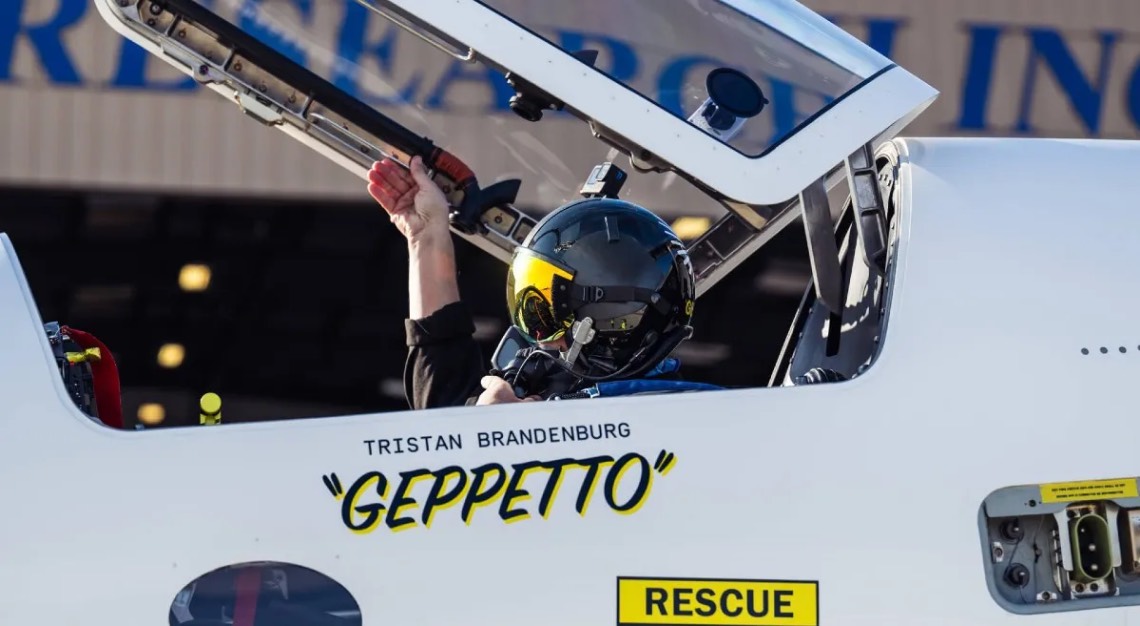
“XB-1’s supersonic flight demonstrates that the technology for passenger supersonic flight has arrived,” said Boom’s founder Blake Scholl. “A small band of talented and dedicated engineers has accomplished what previously took governments and billions of dollars.” Boom has not received grants from any US military programmes, which some competitors considered essential to get a supersonic programme off the ground.
Tristan “Geppetto” Brandenburg, Boom’s chief test pilot and a former Navy test pilot, made the flight yesterday. It followed a protocol that expanded its flight envelope through subsonic, transonic, and then supersonic speeds. It was shadowed by two former fighter jets that Boom uses to monitor the XB-1 during the test flights.
Scholl said the next step is to scale up the technology used on the XB-1 for Boom’s supersonic airliner called the Overture. “Our ultimate goal is to bring the benefits of supersonic flight to everyone,” he said.
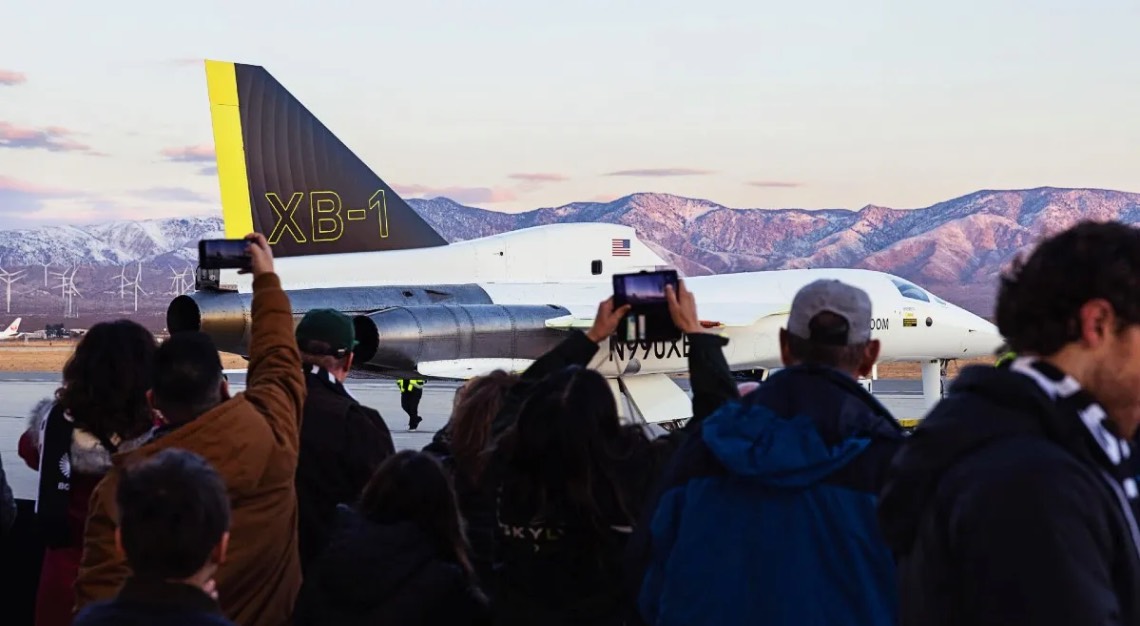
The Overture is a much larger, more complicated commercial aircraft, designed to fly at Mach 1.7 and carry 64 to 80 passengers. Boom anticipates that the first commercial Overtures will take flight in 2029. It has begun construction of a production facility in North Carolina and has received 130 orders and pre-orders from American Airlines, United Airlines and Japan Airlines.
Boom says, at scale, it should be able to produce 66 Overtures per year. But that is still just a business plan that many aviation experts believe is unrealistic, citing the fact that the company was forced to build its own supersonic engines after major aviation engine manufacturers turned down the project.
Still, the company proved that it has reached the first step through an experimental jet—a step that its better-funded competitor, Aerion, never reached aft 20 years of developing its own supersonic business jet concept. It abruptly shut down in May 2021, citing little investor appetite in the supersonic concept.
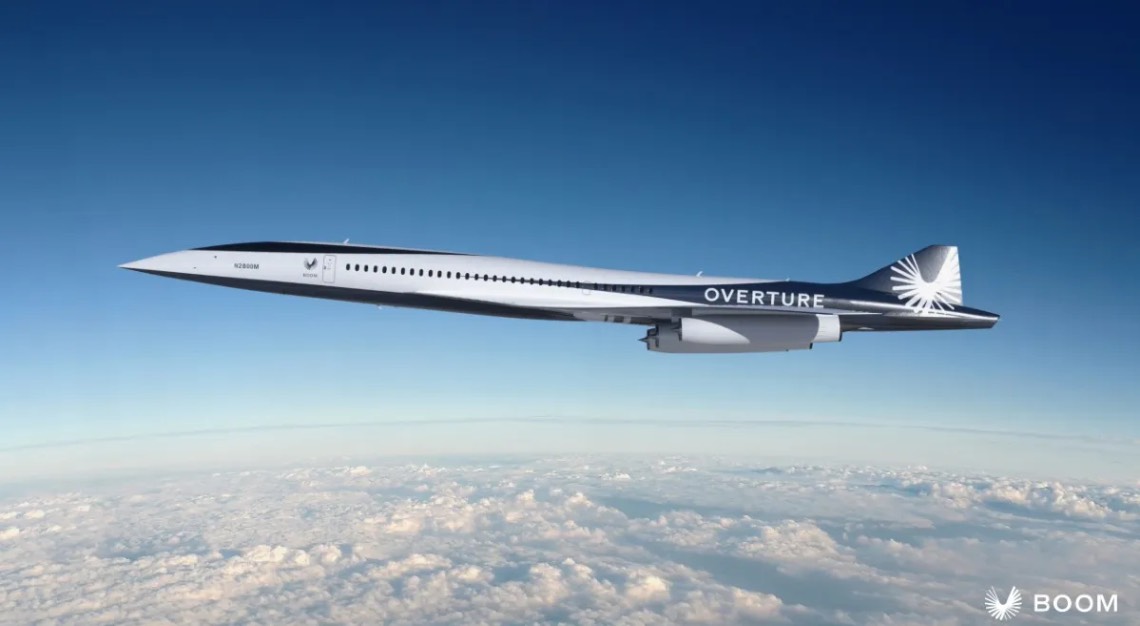
As a test platform, the XB-1 tries out multiple technologies that will be applied to the much larger and more complicated Overture. They include an augmented-reality vision system, which aids the pilot in seeing the runway on takeoff and landing, and digitally optimised aerodynamics, referring to the shape of the airframe and wings for the greatest stability at supersonic speeds. The aircraft is almost entirely made from carbon-composite materials, which allowed the designers to shape it more precisely.
The company will continue testing the XB-1 going forward.
This story was first published on Robb Report USA
